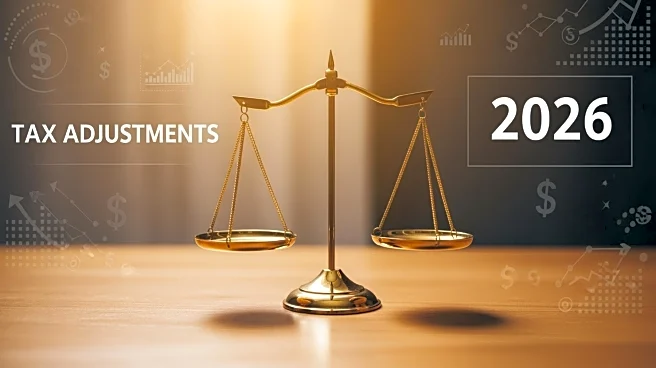What's Happening?
The Internal Revenue Service (IRS) has announced changes to the tax brackets for the 2026 tax year, reflecting a 2.7% increase to account for inflation. This adjustment means that taxpayers filing returns
in April 2027 may not face higher tax rates even if their income increases slightly. The standard deduction will also rise by 7.3% for all filers compared to 2025, with specific amounts set for different filing statuses. Despite a government shutdown affecting IRS staffing, the agency released these updates to ensure taxpayers are informed of the changes. The adjustments aim to prevent 'bracket creep,' where taxpayers could be pushed into higher tax brackets due to inflation rather than actual increases in purchasing power.
Why It's Important?
These changes are crucial for taxpayers as they could impact the amount of federal income tax owed. By adjusting tax brackets for inflation, the IRS helps maintain taxpayers' purchasing power and prevents unintended tax increases. This is particularly important for middle-income households that might otherwise face higher taxes due to nominal income increases. The increase in the standard deduction also provides additional tax relief, potentially reducing taxable income for many filers. These adjustments reflect the IRS's ongoing efforts to align tax policy with economic conditions, ensuring fairness and predictability in the tax system.
What's Next?
Taxpayers should review the new tax brackets and standard deduction amounts to understand how these changes might affect their tax liabilities. Financial advisors and tax professionals will likely update their guidance to clients based on these adjustments. As the 2026 tax year approaches, individuals and businesses should plan accordingly, considering potential impacts on tax planning and financial strategies. The IRS may continue to monitor economic conditions and make further adjustments if necessary.












